If you are a lover of honey like we are then you will be pleased to know that there is so much more to honey than what you will typically find in your local grocery store.
We have taken the time to research numerous exotic varieties of honey. These are in no particular order but they are all worth a look.
Blueberry Honey
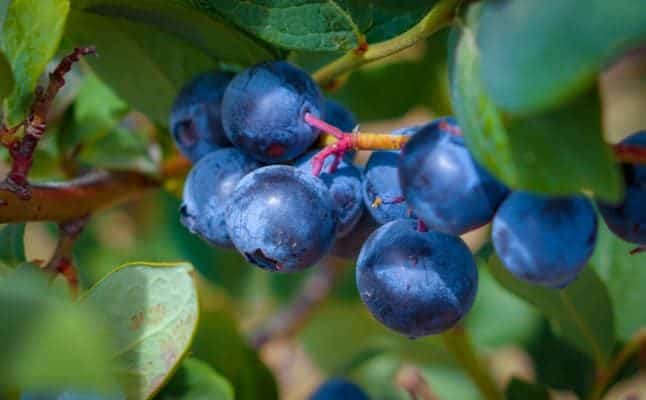
Make Up
True blueberry honey is monofloral honey. Produced by honey bees that only have access to blueberry blossoms. This is achieved when beehives are used for the pollination of blueberry orchards.
Blueberry honey ranges from light in color to dark amber in appearance. Be careful when sourcing blueberry honey as some people will try and infuse blueberries with honey calling it blueberry honey. This is different from true single-origin blueberry honey.
Tasting Notes
Blueberry honey has a naturally sweet taste even slightly stronger than you might expect but in a pleasant way. The taste is smooth with earthy undertones which delivers a delightful contrast to your palate.
Region and Availability
In the United States, 98% of blueberries come from ten states, California, Florida, Georgia, Indiana, Michigan, Mississippi, New Jersey, North Carolina, Oregon, and Washington. Blueberry honey is seasonal, following the seasonal flowering of blueberries which is in the summer with blueberries flowering around June.
Blueberry honey can be difficult to source out of season due to the limited quantities produced. You are not typically going to find it at your local grocery store. Your best chance is at local markets in blueberry growing areas or purchasing online from a reputable supplier.
Cost
Cost does vary quite a bit but typically prices begin at about $11 for a small 8 ounce bottle.
If you would like to know more, we have a full article, including suppliers, where you can discover everything you need to know about Blueberry Honey.
Chestnut Honey
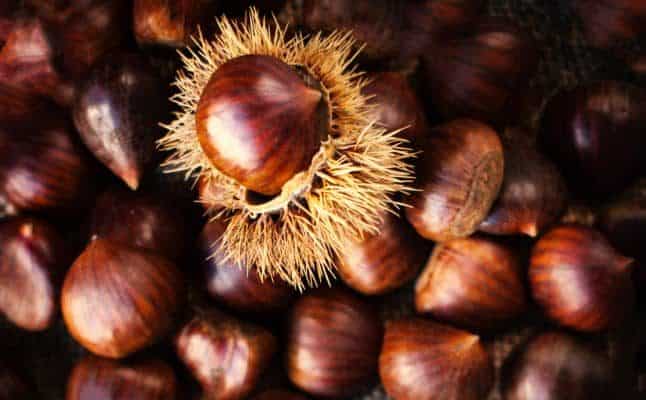
Make Up
Chestnut honey is monofloral honey from the blossoms of chestnut trees. The chestnut honey is typically dark brown in color, however, this will vary a little depending on the season and the variety of chestnut. The color comes from the tannins in the flowers.
If the season has been dry the color of the honey will be darker conversely it will be lighter if the rainfall has been high.
Tasting Notes
Chestnut honey has a uniquely bitter taste with a nutty flavor; there are also smokey even leathery notes. This spicy honey has an aromatic taste that lingers on the palate as a nutty finish develops.
Like the color of the honey, the flavors of chestnut honey also vary depending on the variety, the region, and the weather. The color also relates to the intensity of the taste. The darker the chestnut honey is the more intense the flavors are.
With these variables considered, chestnut honey can have quite a diverse range of flavor profiles. This is one of the reasons chestnut honey is a regular for lovers of monofloral honey.
Region and Availability
Traditionally Italy is the most well-known location for producing quality chestnut honey. Having said that, chestnut honey is produced in other locations around the world. Other notable locations are Greece, France, Japan, China, and the United States.
Interestingly not all chestnut species around the world produce nectar. The most common honey-producing species of sweet chestnut are found in Europe.
In the United States, the most common species is Allegheny Chinkapin growing mostly in the eastern states. It is known for its strong bitter flavors.
Chestnut honey is typically more available during mid to late summer. With a limited supply, chestnut honey is often hard to purchase when out of season. Having said that, Italian chestnut honey can be found online late into the year.
Cost
As mentioned earlier there are a wide variety of chestnut honey flavors and like good wine, it varies in price depending on the quality and flavor profile. Prices can vary from $1 per ounce to $30 per ounce. Most suppliers offer discounts for larger quantities.
If you would like to know more, we have a full article, including suppliers, where you can discover everything you need to know about Chestnut Honey.
Sunflower Honey
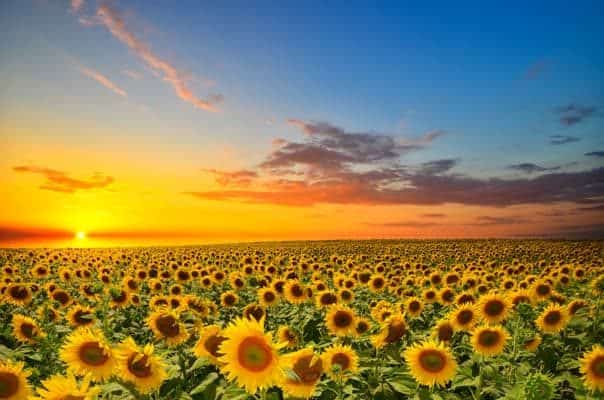
Make Up
Sunflower honey is a monofloral honey. Typically the honey is produced from beehives used for pollination of large sunflower plantations. Sunflower honey is bright to dark yellow in appearance.
Sunflower honey is high in glucose making it prone to crystalizing quickly
Tasting Notes
Sunflower honey is rich in taste and texture. It tastes very sweet with an acrid kick which isn’t too unpleasant and doesn’t last long.
Sunflower honey makes a great addition to a dessert dish as a sweetener or as a delicious spread on your morning toast.
Region and Availability
Bulgaria is the leading producer of sunflower honey. Sunflower honey is also produced locally in the United States. Sunflowers produce nectar for the bees for about a 2 to 3 week period in July. Fresh sunflower honey is readily available in the United States around September.
In Florida where the winter is very mild sunflowers will bloom twice a year. Once in the winter and again in spring.
Sunflowers are still seasonal and availability can be patchy at different times of the year. There are online suppliers with stock most of the year-round.
Cost
The cost of sunflower honey usually starts around $8 per 4 ounce jar.
If you would like to know more, we have a full article, including suppliers, where you can discover everything you need to know about Sunflower Honey.
Wildflower Honey
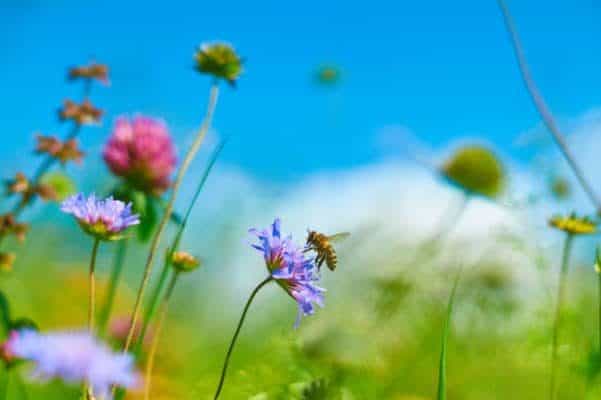
Make Up
Wildflower honey is polyfloral, meaning it is made from the nectar of various species of flowers. Most local honey you would buy from a backyard beekeeper would be wildflower honey. The backyard beekeepers hives usually stay in the same location collecting nectar from the flowers within range of their hives that are seasonally available.
This means the color of the honey will vary even in the same location depending on the seasonal flowers available.
Tasting Notes
The great thing about wildflower honey is the variety of flavors you can experience due to it being polyfloral.
In the spring and summer, you will find wildflower honey possesses more fruity flavors. This is because bees are foraging from blackberries, blueberries, and apple blossoms. In the fall batches tend to have a more earthy note.
Wildflower honey is great everyday honey, perfect for cooking, using in smoothies or drizzled morning toast or yogurt.
Region and Availability
Wildflower honey is available in virtually every state in the United States. The great thing about wildflower honey is it is also commonly available around the world, meaning there is a wide variety of flavors depending on what region it has been sourced.
Two crucial things to look out for are that the honey is raw and unfiltered. This means you are purchasing honey in its most natural state with no pasteurization or additives. We do have an informative article on the importance of sourcing raw and unfiltered honey and the benefits. The article is called, What Is Raw Unfiltered Honey?
Cost
The best place to buy wildflower honey for everyday use is from your local beekeeper. You will often find them at farmers’ markets or on the Facebook marketplace. We sell our wildflower honey straight from our house. We place a sign out the front. So keep an eye out when you are driving in your local area for a honey sign as this is common practice for backyard beekeepers.
Price does vary quite a bit depending on where you live, the time of year, and how much honey the bees produced that season. Typically we have seen prices ranging between $0.70 to $1.40 per ounce.
A hot tip is, if you bring your own container or jar you can often get a better deal from your local beekeeper.
If you would like to know more, we have a full article, including suppliers, where you can discover everything you need to know about Wildflower Honey.
Jarrah Honey
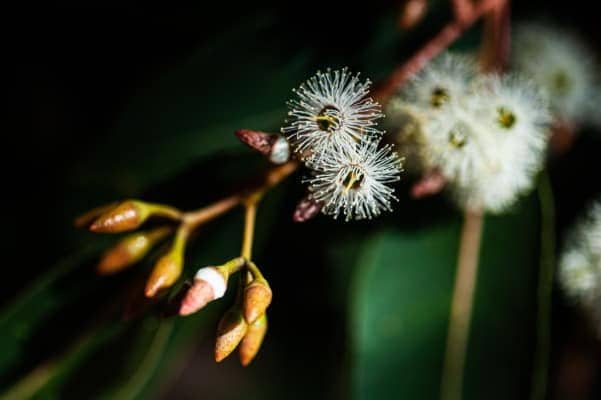
Make Up
Jarrah honey is a monofloral honey from the blossoms of Jarrah Trees (Eucalyptus Marginata). In appearance, Jarrah honey is from a medium to a dark amber color. It has come from relative obscurity to rare and sought-after honey.
Jarrah honey used to be reasonably priced. Dr.Rob. Manning, PH.D. a former researcher with the Australian Department of Agriculture tirelessly worked for three decades studying Australian Jarrah Honey. He discovered that the honey possesses beneficial anti microbiological properties.
Research uncovering health benefits and the limited supply of Jarrah honey have driven up the price and popularity particularly within the food, cosmetic and clinical industries.
It is important to note that Jarrah honey has a low glucose, high fructose content making it resistant to crystallization.
Tasting Notes
Jarrah honey is delicate, smooth, and full-bodied, with rich nutty malt flavors. It is one of the most sought-after honey varieties by honey connoisseurs in Australia.
Jarrah honey has a beautifully thick consistency with a taste likened to caramelized brown sugar with an aftertaste of the Chinese dried longan fruit.
Region and Availability
Jarrah honey is produced predominantly in Western Australia. Western Australia is the largest state in Australia encompassing the entire west coast. It is over 3.5 times the size of Texas.
In Western Australia, there are forests of Jarrah Trees that are protected by the state government. Jarrah trees can grow up to 40 meters (131 feet). Beekeepers are able to move beehives into these forests in the Australian spring and summer whilst the giant trees are blossoming.
Genuine Jarrah honey is really only available in Australia. Seasonally Jarrah honey is harvested around December and January. With the popularity of jarrah honey on the rise, it is getting hard to purchase year-round.
Cost
Given the limited supply of Jarrah honey, it is one of the more expensive types of honey you can buy. Prices vary according to their TA rating (Total Activity). A jarrah honey bottle with a TA rating of 10+ can cost up to $40 per pound and as much as $60 per pound.
Purchasing of jarrah honey will need to be done online because it is from Western Australia unless of course, you are reading this from Western Australia.
If you would like to know more, we have a full article, including suppliers, where you can discover everything you need to know about Jarrah Honey.
Creamed Honey
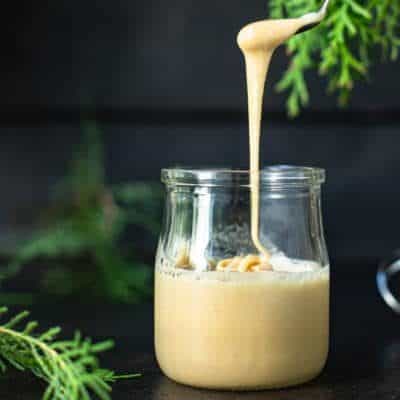
Make Up
Creamed honey can be monofloral or polyfloral because it is not a variety of honey like the others we talk about in the article. However, it is a very noteworthy addition to the list because it is something that everyone who likes honey should try. Better still, it’s not only affordable but you can produce it yourself at home.
Creamed honey is honey that’s crystallized in a controlled process. A creamed honey culture is mixed thoroughly through uncrystallized honey. The result is a creamed honey made up of fine uniform crystals.
Crystallization of honey is a natural occurrence nevertheless it can be frustrating when you go to the pantry and your favourite honey has crystallized. When the once nice smooth, runny honey is now grainy and crystallized it can be salvaged through the creaming process.
Creaming honey is a way to get in front of crystallization by inducing the crystallization process and giving you much more enjoyable honey.
Tasting Notes
The flavor of creamed honey is pretty much in line with the honey from which it is made. It is the texture and the color of the creamed honey that is a nice change.
The color of creamed honey is light and creamy. The creamed honey has a thick spreadable consistency.
Creamed honey can be used in many ways. Here are some that are worth trying:
- Sweetener: Used in tea, coffee, or even juices.
- Spread: It doesn’t drip like regular honey and is great on toast, biscuits, or sandwiches.
- Baking: Can be used as a natural substitute for other sweeteners in cakes and biscuits.
- Breakfast Cereals: Creamed honey is delicious with oatmeal and other cereals.
- Snacks: Creamed Honey combines well with slices of pear, apple, cheese, or even hot sweet potatoes.
- Pancakes: Creamed honey is a great alternative to sugar or syrup on pancakes.
Region and Availability
As we mentioned earlier creamed honey is not region-specific because you can make it from virtually any variety of honey. It is readily available all year round.
It is however fun to make your own creamed honey. To do this you will need to purchase a small amount of creamed honey to be used as the catalyst. You can also experiment with adding some infusions such as cinnamon, ginger, vanilla, or even cardamom, cloves, or peppercorns.
Cost
If you are wanting to try creamed honey or you need some as a catalyst it is often available in grocery stores and certainly at farmer markets for as little as $10.
If you would like to know more, including how to make creamed honey, we have a full article, including online suppliers, where you can discover everything you need to know about Creamed Honey.
Leatherwood Honey
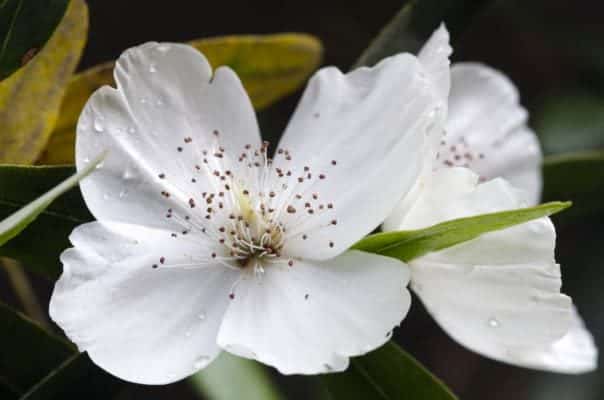
Make Up
Leatherwood honey is a monofloral honey variety from forests in the state of Tasmania in Australia. Leatherwood honey in 2015 was voted the “best tasting honey in the world” by the Apimondia International Apicultural Congress.
The leatherwood trees are endemic to remote parts of Tasmania giving the honey a unique flavor profile. It has a runnier texture than most kinds of honey which is ochre-yellow in color and has low acidity levels.
Tasting Notes
Leatherwood honey has a unique spicy and musky flavor with a full-bodied lingering aftertaste.
It has a bold aroma and distinctive taste, with balsamic notes that evolve into a citrusy, floral aftertaste.
Leatherwood honey has a smooth buttery texture that melts in your mouth creating a truly pleasurable experience.
Its creamy texture and lower-than-average sweetness make it a perfect addition to coffee, bread, and baked food recipes.
Region and Availability
There are two varieties of leatherwood trees that produce honey: Eucryphia Lucida and Eucryphia Milliganii with the latter less common variety only growing at higher altitudes.
Most leatherwood honey comes from the Eucryphia Lucida variety. In fact, 70% of all honey produced in Tasmania is leatherwood honey.
The western part of Tasmania has the most Leatherwood forest and produces most of the leatherwood honey.
One of the reasons this variety of honey is so rare and special is that it takes 70 years for a leatherwood tree to reach nectar-producing maturity.
Beekeepers have their hive on flowering leatherwood trees in the Australian spring and summer harvesting honey through to about March.
Beekeepers export a portion of their honey harvest which is affected by rainfall and forest fire. This means some years there is very little available on the open market.
Cost
The cost of leatherwood honey does vary depending on where you are located. Locally in Australia, the cost can be as cheap as $20AUD per kilogram (2.2 pounds).
There is limited availability internationally however we have seen it available on Amazon in the United States for about $35 per kilogram (2.2 pounds).
If you would like to know more, we have a full article, including suppliers, where you can discover everything you need to know about Leatherwood Honey.
Sourwood Honey
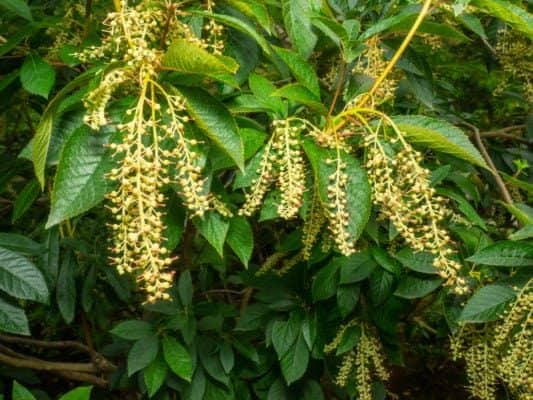
Make Up
Sourwood honey is one of the most sought-after monofloral honey varieties. It has a pale golden color and is known for its characteristic sweetness.
As the name suggests the honey comes from the nectar of the sourwood tree. You may know it by other names including arrowwood, elk, lily of the valley, sorrel, and sour gum.
The sourwood tree is native to the United States. The tree has been used by the Cherokee who used its leaves and bark for natural remedies and its wood to make arrows.
Due to its popularity, it can be hard to find and you need to be careful that you are purchasing genuine sourwood honey.
Tasting Notes
One would be excused for thinking that sourwood honey may have a sour taste. In fact, it doesn’t at all, it has a beautiful mild caramel flavor and a hint of spice that leaves an aftertaste that might remind you of licorice.
Region and Availability
The sourwood trees have a strong presence in the Appalachian Mountains resulting in sourwood honey production in the states of Florida, Georgia, North and South Carolina, Tennessee, and Virginia.
This results in a strong production of sourwood honey in these areas with North Carolina having the reputation as the largest producer in the United States.
Sourwood trees flower around June to July with fresh sourwood honey coming available in about July and August. Availability depends on how well the season has produced. The honey is popular and if you are wanting to purchase some get in early.
Cost
Cost does vary depending on the season however the price is typically about $15 for a 1 pound (453 gram) jar.
If you would like to know more, we have a full article, including suppliers, where you can discover everything you need to know about Sourwood Honey.
Sidr Honey
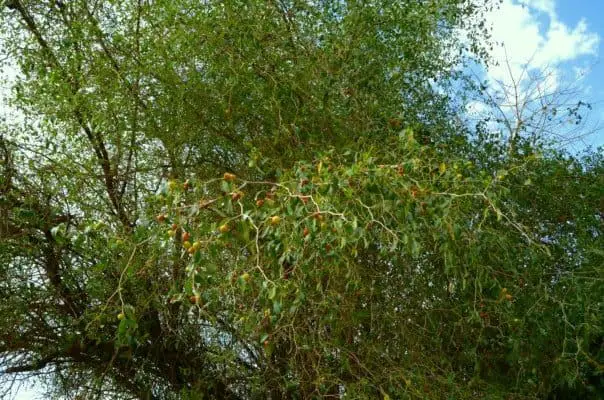
Make Up
Sidr honey is one of the most expensive honeys on the market and getting the genuine article can be a challenge.
It is monofloral honey from the sidr tree grown in the Middle East. It is said in the region that this was the first thing that Adam ate in the garden of Eden.
The sidr tree certainly has a long history. It was used by the Pharaohs to build palaces and temples while peasants used the fruit to make bread.
It is also believed that the crown of thorns, as described in the Bible that was worn by Jesus on the cross was made from the branches of the sidr tree. The tree is often referred to locally as the “Christ thorn tree”.
It is no surprise that sidr tree honey, thick and golden in appearance, is highly sought after.
Tasting Notes
Sidr honey has been described as tasting rich and lavish with a sweet buttery flavor whilst having an earthy feel.
The taste has also been described as unique so much so that once you have tested sidr honey you would recognize its distinct flavors right away if you were to experience it again.
Although the flavor does not seem to be affected, that color of sidr does change as it ages. The fresh sidr honey is bright and golden, as it ages the honey becomes darker with a shade of red.
Region and Availability
The sidr tree is native to India, Pakistan, Ethiopia, Egypt, Libya, Sudan, and the southern part of the Arabian Peninsula.
It is the Hadramaut region of Yemen though that has the longest history of producing sidr honey dating back thousands of years.
Genuine sidr honey is harvested once a year after the trees have flowered. The Sidr trees flower for about 40 to 60 days usually during the fall around October.
Sidr honey can be hard to get outside of the Middle East and certainly sidr honey from Yemen can be even harder to find because of its rich history it is so sought after locally.
Cost
Cost does vary but makes sure you are confident you are buying the genuine sidr honey before parting with your hard-earned cash.
Prices start at $30 to $50 and range up to a whopping $500+ for a 290 gram (3.17 ounce) jar for sidr honey sourced from wild beehives in caves at high altitude in the mountains of Yemen.
If you would like to know more, we have a full article, including suppliers, where you can discover everything you need to know about Sidr Honey.
Orange Blossom Honey
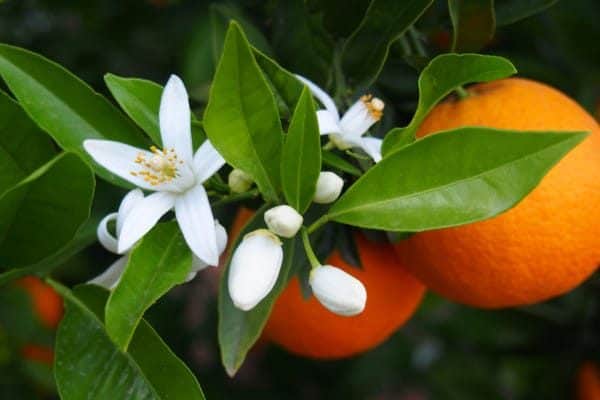
Make Up
Orange blossom honey is considered a monofloral honey even though it is really a little more broadly from citrus trees.
The honey has a mild citrus fragrance and interestingly it also contains small amounts of caffeine due to a chemical compound found in the nectar of the citrus flowers.
Orange blossom honey is also rich in antioxidants such as flavonoids which are known to combat the adverse effects of free radicals, such as aging and other health conditions.
Tasting Notes
It is not surprising that orange blossom honey with its light golden appearance takes on some of the characteristics of the citrus blossoms from which it comes.
It has a refreshing zesty fragrance and is quite sweet compared to most other honeys with a hint of acidity.
Orange blossom honey has a high glucose content making it susceptible to crystallization more so the honey with high fructose content.
Region and Availability
Orange blossom honey is seasonal with most citrus grown in the warmer southern part of the United States with California, Florida, and Texas well-known producers.
Internationally, France, Israel, Italy, and Spain are renowned for producing great quality orange blossom honey.
In the United States, beekeepers are called in to bring beehives to help pollinate citrus groves in the months of March and April. The nectar they collect during pollination results in good availability of orange blossom honey in late April and May.
If you are looking to purchase the honey it is best to get in early not only because of the short season but because orange blossom honey is susceptible to crystallization. Not that you can’t eat crystallized honey, just the experience of fresh honey is what you are really looking for.
Cost
For monofloral honey, orange blossom honey is pretty reasonably priced. You can buy a pound of orange blossom honey from $9 to $15 with organic options from about $17 for a 12 ounce (340 grams) Jar.
If you would like to know more, we have a full article, including suppliers, where you can discover everything you need to know about Orange Blossom Honey.
Black Seed Honey
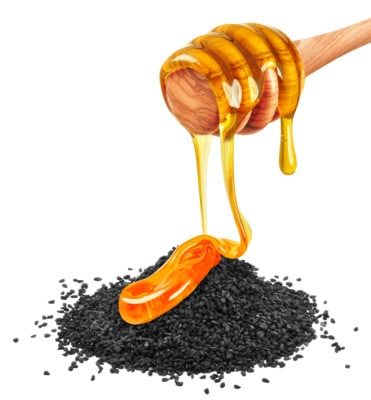
Make Up
Black seed honey is a honey infusion where honey is infused with black cumin or black caraway seeds. The seeds are either mixed whole or ground into a powder before being infused into the honey.
Both the honey and the black seeds have been valued since the early civilizations like the Egyptians, the Greeks, the Persians, the Asians, and the Romans for both culinary and medicinal purposes. It makes sense this infusion of both would provide value.
The good news is like the people of these early civilizations you can make black seed honey yourself at home.
Tasting Notes
Black cumin seeds have a pungent bitter taste and smell like onions, black pepper, and oregano combined. Raw honey usually has a distinct taste and aroma depending on its botanical origins.
The mix of the two contrasting ingredients makes for a unique blend that has the strong characteristics of Kalonji along with the soothing undertones of honey. It tastes natural and fresh with a slightly tangy aftertaste.
Region and Availability
Nigella sativa as the black cumin is also known to grow in Europe, Asia, Egypt, also around the Mediterranean and Northern Africa.
The black seeds are readily available all year round in grocery stores.
Because there is no rule around what variety of honey you must use in black seed honey you can use what you have available at the time. You should use raw honey which you should be able to source year-round also.
Cost
Black seed honey is available mostly online however some health food stores stock it. The cost is around $28 for a 500 gram (1.1 pound) Jar.
Of course you can always make it yourself.
If you would like to know more, including how to make black seed honey, we have a full article, including online suppliers, where you can discover everything you need to know about Black Seed Honey.
Acacia Honey
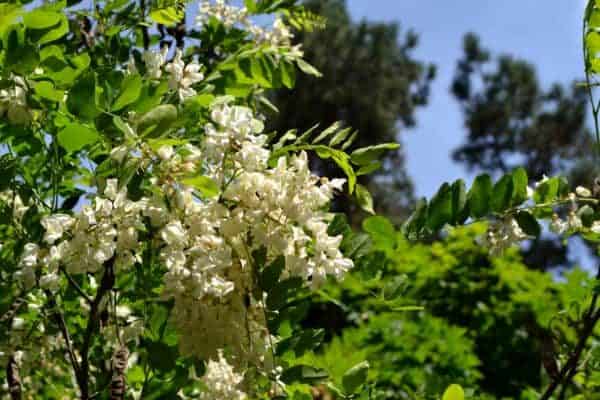
Make Up
Acacia honey is produced from the nectar of the Robinia Pseudoacacia tree, more commonly known as the black locust tree or the false acacia.
The Europeans call it acacia honey however in the United States it is sometimes referred to as locust honey.
It is a little different from other types of honey in appearance because it is much more transparent with light-colored variations. The variations come from different varieties, white acacia trees produce more transparent honey than yellow acacia trees. The lighter the color tends to be the better quality.
Another interesting characteristic of acacia honey is that it has a high fructose content and a fairly low sucrose content. High levels of fructose mean that it is resistant to crystallization lasting up to 2 years without crystallizing.
Tasting Notes
Acacia honey has a clean, pure, nectarous honey flavor, with a slightly acidic, unobtrusive taste. It may also contain hints of sweet, warm, and sharp fragrances like almond and vanilla. It is also known to throw traces of spices like nutmeg or tropical fruit scents like pineapple.
It is mild honey without intense flavors. Acacia honey is enjoyed by so many because it is light with a delicate aftertaste that champions the acacia flowers’ tones.
Region and Availability
The fake acacia or black locust trees are native to the southeastern United States but have now been introduced across the United States, Europe, South Africa, and Asia.
Hungary is now one of the most significant producers with farmers having planted fields of false acacia trees to produce the honey. Bulgaria, Romania, and Germany are also notable producers in Europe.
The risk with acacia honey production is the short flowering period. They blossom in May for about 10 to 15 days.
The weather is critical. False acacia trees need a good wet season to bring on a strong nectar flow. Low rainfall results in the trees not producing much nectar which means reduced honey production. Unseasonal rain during flowering can ruin the season washing away the nectar from the trees.
June is when the new season’s honey will hit the market. Availability year-round is really dependent on how successful the season was.
Cost
The price of acacia honey varies but as a range, 12 ounce (340 gram) jar is between $12 and $20 and is available from suppliers in the United States.
If you would like to know more, we have a full article, including suppliers, where you can discover everything you need to know about Acacia Honey.
Buckwheat Honey
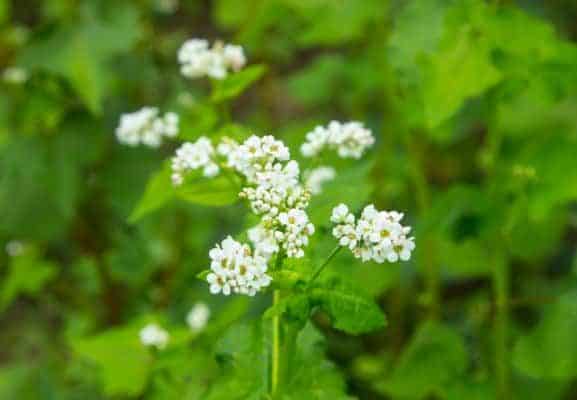
Make Up
Buckwheat honey is clearly from the nectar of the buckwheat plant. Buckwheat is a pseudocereal and can be grown and harvested within 12 weeks. The seeds that are harvested are high in protein, carbohydrates, and vitamins.
They produce nectar from their white and pink flowers which the bees enjoy. The honey they produce bears a close resemblance to molasses and is jam-packed with antioxidants, minerals, and vitamins. The deep brown appearance of buckwheat honey makes it one of the naturally darker kinds of honey available.
Tasting Notes
Buckwheat honey has a distinctive flavor profile that packs some punch. It has an intense earthy flavor that seems to marry up with its dark coloring. A characteristic slight bitterness enhances its complexity.
All in all, buckwheat honey delivers a bold and unforgettable tasting experience.
Region and Availability
The largest producers of buckwheat honey are Russia and China. France, Poland, Finland, Lithuania are European producers along with Bhutan, Japan, and Korea in the Asian regions.
In the United States, buckwheat honey is produced in North and South Dakota, Montana, New York, Ohio, Pennsylvania, and Wisconsin.
Buckwheat flowers for several weeks at a time. Buckwheat enjoys warmer weather and thrives in summer. The majority of the honey is produced in the late summer with good availability in the United States from local and international suppliers.
Cost
Buckwheat ranges in price from about $20 to $30 per kilogram (2.2 Pounds) depending on the supplier and the time of year you are purchasing.
If you would like to know more, we have a full article, including suppliers, where you can discover everything you need to know about Buckwheat Honey.
